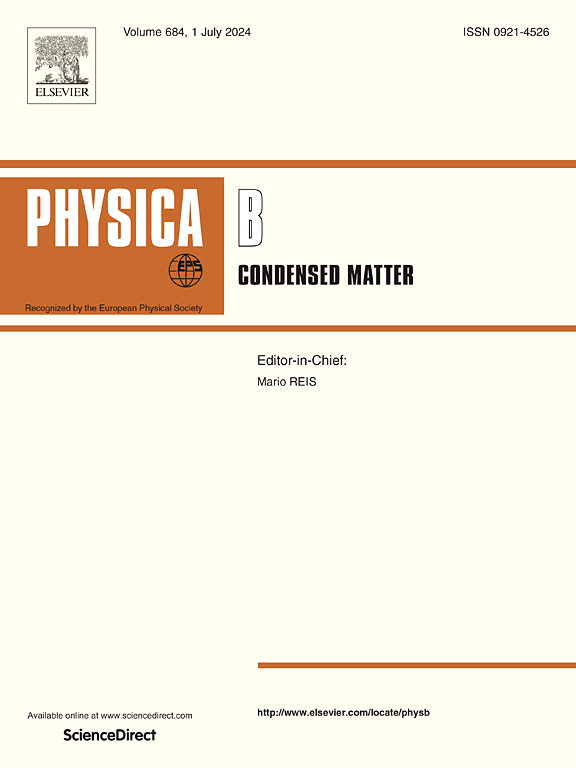宽带近红外发光在Al5BO9: Cr3+, Ga3+荧光粉近红外光谱中的应用
IF 2.8
3区 物理与天体物理
Q2 PHYSICS, CONDENSED MATTER
引用次数: 0
摘要
Cr3+激活的近红外光源在夜视和生物医学成像中有着广泛的应用。然而,提高Cr3+掺杂近红外发射材料的发射效率和热稳定性仍然是一个挑战。本文采用固态烧结法合成了Al5BO9: Cr3+, Ga3+荧光粉。在400 nm光激发下,开发的荧光粉在697 nm处发射出窄波段,并在750 nm处发射出宽的近红外光谱。值得注意的是,该系统获得了61.45%的最佳内部量子效率(IQE),以及相对于环境条件的优异热稳定性(83.1% @ 373 K)。封装的近红外磷光转换LED (pc-LED)原型显示,Al5BO9: Cr3+, Ga3+荧光粉在320 mA驱动电流下输出140 mW近红外辐射功率,相应的光电转换效率达到13.65%。封装的近红外pc-LED在实际演示中的表现进一步证实了该荧光粉在生物成像和近红外夜视方面的应用潜力,凸显了其广阔的应用前景。本文章由计算机程序翻译,如有差异,请以英文原文为准。
Wideband near-infrared luminescence in Al5BO9: Cr3+, Ga3+ phosphor for near-infrared spectroscopy application
Cr3+-activated near-infrared (NIR) light sources have witnessed substantial application in night vision and biomedical imaging. However, enhancing the emission efficiency and thermostability of Cr3+-doped NIR emitting materials remains a challenge. Herein, Al5BO9: Cr3+, Ga3+ phosphor was synthesized via the solid-state sintering methodology. Upon 400 nm photoexcitation, the developed phosphor emitted a narrow band at 697 nm accompanied by a broad NIR profile peaking at 750 nm. Remarkably, the system achieved an optimal internal quantum efficiency (IQE) of 61.45 %, and superior thermostability (83.1 % @ 373 K) relative to ambient conditions. The prototype of a packaged NIR phosphor-converted LED (pc-LED) revealed that the Al5BO9: Cr3+, Ga3+ phosphor delivered 140 mW NIR radiation power at 320 mA driving current, and the corresponding photoelectric conversion efficiency reached 13.65 %. The performance of the packaged NIR pc-LED in practical demonstrations further substantiated the phosphor's potential for application in biological imaging and NIR night vision, highlighting its promising prospects.
求助全文
通过发布文献求助,成功后即可免费获取论文全文。
去求助
来源期刊

Physica B-condensed Matter
物理-物理:凝聚态物理
CiteScore
4.90
自引率
7.10%
发文量
703
审稿时长
44 days
期刊介绍:
Physica B: Condensed Matter comprises all condensed matter and material physics that involve theoretical, computational and experimental work.
Papers should contain further developments and a proper discussion on the physics of experimental or theoretical results in one of the following areas:
-Magnetism
-Materials physics
-Nanostructures and nanomaterials
-Optics and optical materials
-Quantum materials
-Semiconductors
-Strongly correlated systems
-Superconductivity
-Surfaces and interfaces
 求助内容:
求助内容: 应助结果提醒方式:
应助结果提醒方式:


